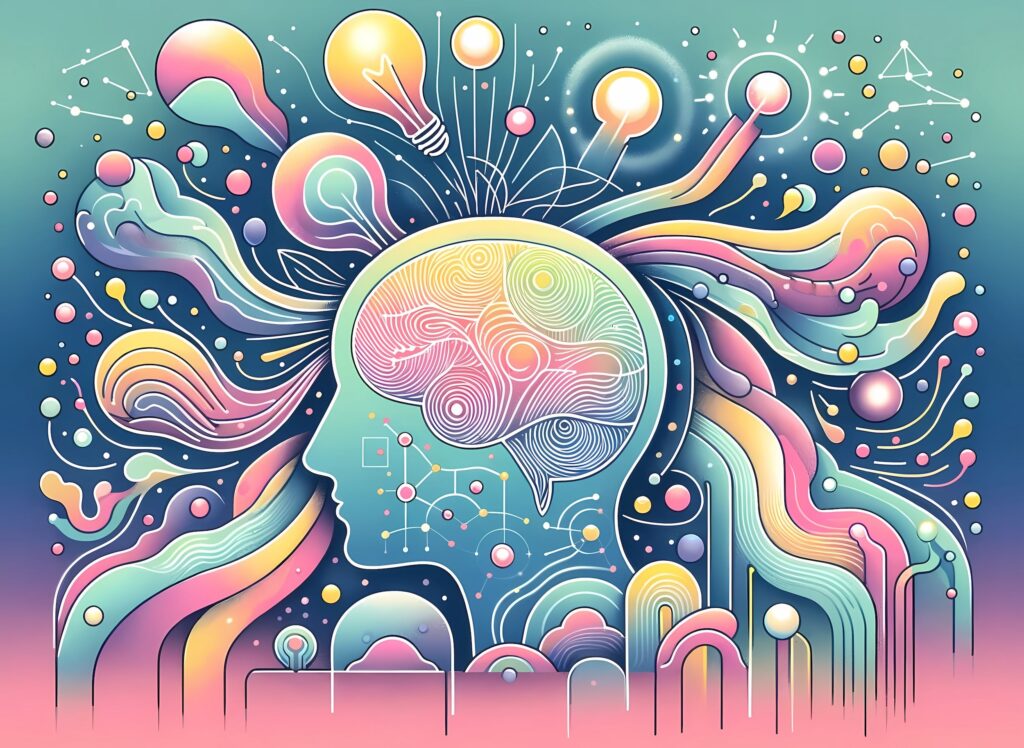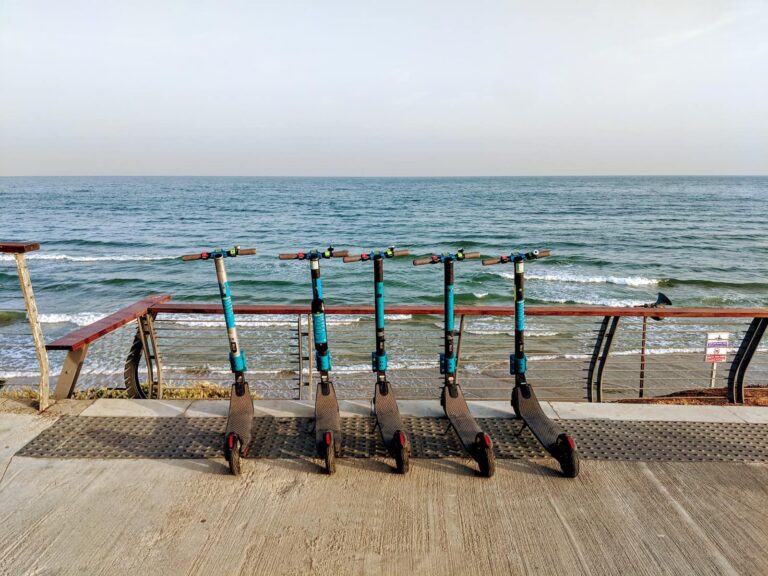The Quest for Flow State: Chasing Being “In the Zone”
Something I’ve come to realise, over a long period, is the pure, untrammelled joy of being “in the zone” of something. It doesn’t matter whether I’m an expert at it, nor whether I’ve been doing it for a long time; there are just moments where I feel like I’m 100% present and involved with what I’m doing.
Some examples of where I feel in the zone are when I’m practising jiu-jitsu (which is partly why I decided to dedicate myself to it), when I’m riding a motorcycle in the countryside, or writing. It’s not unique to those activities. And I find that I’m adding more situations in which I’m in a flow state over time.
These are activities which when I do them, I become completely absorbed. I feel light, like I’m in the right place, nothing else matters, and everything is right in the world. Time slows to a standstill.
Because this state is so enjoyable, and so conducive to productivity and overall happiness, I want to find out a few things about flow state.
- What is “flow state” exactly? How is it defined?
- Why do I achieve a state of flow or being in the zone in the things I do?
- How can I cultivate it in other activities?
- What are some ways of catching myself exiting it, and bringing myself back into the zone?
I’ll explore all this below.

What Is “Flow State”?
Luckily, I’m not the first person to think of the concept of the flow state. There has been a lot of study on flow state in the last fifty years or so, since the seventies.
Psychologists describe flow state as moderate psychological arousal — between boredom and being overwhelmed.
It is different from just being interested in something. There’s active, undivided attention — my senses, body, and mind are aligned. Think, for example, of eating something very tasty in silence, focusing entirely on the experience, and not talking to anyone else.
Flow state is different, psychologists say, from hyperfocus, which is also a trait of ADHD1, though not unique to ADHD (see here for more on how I realised I needed an ADHD diagnosis). Flow state is always positive, whereas hyperfocus can be negative. For example, you can be drawn into addictive games or apps, or into things like gambling. They can draw all your attention, but you don’t feel good coming out of them.
Flow state, on the other hand, is always positive. The most important distinction over getting lost in an addictive thing, like a video game or app, is control and enjoyment. Flow, by contrast, is a beneficial state of deep immersion in a task or activity. You enjoy getting lost in it. Musicians often express this — they can while away hours practising.
Flow can be tiring, though. For example, as much as I enjoy jiu-jitsu, I get tired. I can do a 1.5-2 hour class tops before it’s time to hit the showers and go home. But in that time, I feel like time stops. I want to be doing nothing else.
While flow state is sometimes equated to being “in the zone”, science describes it as being more intense. Psychologist Mihály Csíkszentmihályi wrote some of the seminal work on flow state. He described nine criteria for achieving a flow state:
- Balance between challenge and skills. It can’t be too hard for your perceived skill level, nor too easy. Your subjective perception of the challenge and your skill level is what’s most important.
- Merged action and awareness. This can also be described as a body and mind link. You have to be focused on what you’re doing and have control over what you’re doing.
- Clear goals. These are not just for the big picture goal, but also for the next steps. For example, as an artist, you have to know the progression through a song to be able to flow through it.
- Unambiguous, immediate feedback. You have to get real-time feedback to be able to progress, without having to stop or get lost in the process.
- Concentration. You have to be focused on what you’re doing, with no distractions.
- Control. To flow, you must not worry about loss of control over your concentration, nor about failure. You have to be able to progress through the activity without conscious effort.
- Loss of self-consciousness. In a flow state, you’re in the activity, not in how others may perceive you. You don’t have the intellectual energy to be concerned about how you appear to others.
- A distorted sense of time. Time may seem to come to a standstill when doing it, but it may actually fly by because you’re having fun, as the cliché goes.
- Intrinsic reward. You are gratified just by doing the activity, not from the outcome. This is what’s known as an autotelic experience.)
Looking through that list, it’s no wonder I experience a flow state in jiu-jitsu. It meets all those criteria! I’m a middling non-expert — not terrible but not great, and in the thick of the learning curve. So classes are never too challenging, but never easy. Nobody judges one another based on anything other than skill. And when someone’s trying to choke you, you have no choice but to focus. This is why I decided to commit to it.
In riding motorcycles, I flow because if I don’t concentrate, I might crash and die. In competitive sports, athletes have to concentrate because otherwise, they might lose. Knowing something is at stake helps you focus and remain in flow.
There are sports in which I don’t flow, of course. When I go for a run, I’m distracted. I listen to podcasts, or music, or just let my mind wander. If I ran harder, I’d have to focus, but then I wouldn’t enjoy that as much. I guess I don’t enjoy running intrinsically. But I know that others do, and that’s probably why they experience a runner’s high.
Flow state in things I’m enjoying feels wonderful. So the question is: How can I achieve a flow state elsewhere in life? Not everything meets all those conditions.

How Do You Get Into a Flow State?
I’ve been looking around for guidance on how to achieve a flow state in things that aren’t naturally conducive to it. And this is what I’ve found so far.
Pre-work: You have to have the right environment first. There’s a big-picture part of this, as well as an immediate part.
The big picture pre-work for flow state is to be well-rested, well-fed, and generally comfortable physically with sitting down and doing something for a while.
The immediate work is to have a tidy workspace, all the things you need for your work, and no distractions.
I like to be clean, to have coffee (or yerba mate, something I picked up in Argentina, as many visitors do) at hand, to have a tidy work desk, and to have some music playing.
I also put my phone into do not disturb mode. I close unnecessary apps and tabs, too.
Then, to start a flow session, start with a quick (sub-one-minute) meditation. I close my eyes, count my breaths, and think of positive things I like about myself. It helps if they’re relevant, e.g. “I enjoy writing.”
Now, it’s time to flow.
It’s important to note that I need to be passionate about the thing I’m doing. This is quite hard. You need to have a strong motivation to do the thing.
I’ve found that this is my main inhibitor in achieving flow state in ostensibly boring tasks. One thing I like to remind myself is why I’m doing something. I have to remind myself that I enjoy it — for example, when I find writing an article boring, I have to remind myself that I like writing, and that I like being a writer.
Second, I set a clear goal. The thing I’m doing has to be balanced equally between challenge and how I perceive my skill level. (It’s important that it be about my perception of my skill.)
This is also quite hard. Boring tasks are often too easy. It’s hard to spice them up without changing them into another task altogether. But it’s possible… I can challenge myself to go faster, or to do it differently, or better.
It’s important here to be self-aware. You need to be able to identify your levels of boredom or excitement.
Third, I recognise the importance of breaks. Periodic breaks are important. But I have to take the right kinds of breaks. Social media or other distracting apps can sap my concentration for the next round. It’s better to do something like go for a walk or make a fresh cup of coffee.
Finally, while in a flow state, I sometimes feel my attention wandering. In those times, it’s good to know how to overcome things that inhibit me from continuing in my flow state.
Overcoming Blockers
Here are some suggestions for when you realise you’re coming out of your flow state. These are things I’ve tried, and they all work, to a degree!
Two kinds of things can interrupt a flow state: stress and anxiety, or tiredness and demotivation.
But there are some general ways in which you can overcome blockers. Let’s look at those first.
First, recall your “why”. Why did I start what I’m doing, even if I’m tired or stressed? Do I enjoy what I’m doing, or will I enjoy the end result?
Reflecting on the reason will often help me decide to continue.
Secondly, I might have to tie in some immediate rewards.
When writing, the rewards are often long-term. I can develop some short-term rewards, like telling something about what I’ve learned — as long as it’s not too distracting to do so. A reward could even be thinking of what it’s like to be in the flow of writing — remembering a time when I was in the flow, and what it felt like.
Thirdly, it’s possible that whatever I’m doing isn’t playful enough. It’s more rewarding if it entertains me. I might throw in a few jokes, some Simpsons references, or whatever.
I also enjoy using small meditation techniques to bring myself back into the present. This can be taking a few moments to breathe with my eyes closed, or using some other breathing technique. I keep
Use breathing techniques for attention or flow. I’m just a fan of counting breaths. But some people like “Wim Hof” breathing, which honestly feels a bit like hyperventilating.
Finally, another way of coping with anxiety is simply to be aware of the feelings. This is a meditation-style reflection technique.
I should note that I’m still learning about this idea of focus and remaining “in the zone.” As I learn more, I’ll add to this page.
Wrap up
A lot of “flow state” stuff relates heavily to meditation. I use meditation to start a session of work, use meditation techniques to bring myself back into flow, and even use meditation to become aware of my own feelings. As usual, the result is meditation!
If you’re looking for more info on meditation, I’ll write that up soon. For now, all I’ll say is I’m glad I bought a lifetime subscription to Calm.com years ago on a sale.
Footnotes
- * There’s a movement to rename ADHD, not as a disorder, but as a psychological trait. One suggestion is VAST — Variable Attention Stimulus Trait. It isn’t mainstream yet, but it might become so. ↩︎







